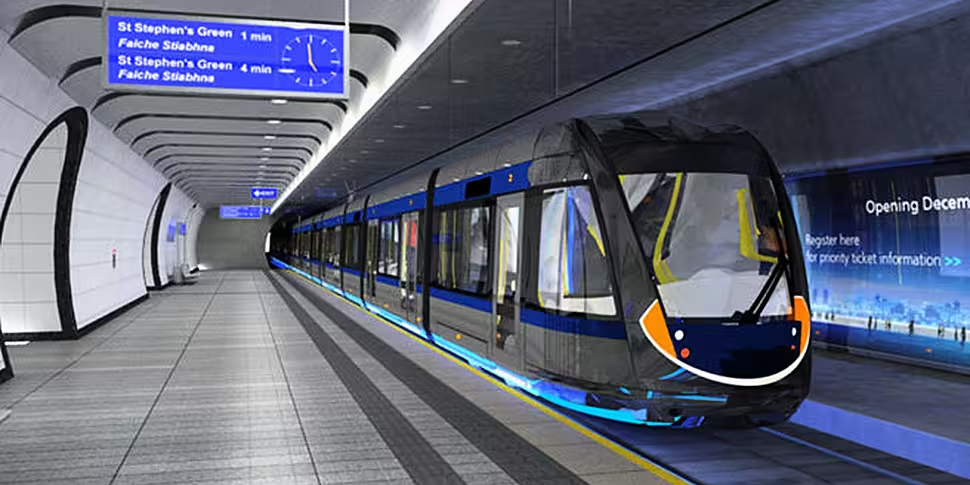There are a number of compelling reasons why the country’s new transport minister, Shane Ross, should reverse his predecessor’s recent decision about a proposed new rail line underneath Dublin City Centre, and proceed to fast track (excuse the pun) the project.
The proposal, currently promoted by Irish Rail, is to build a heavy rail underground link from a new station to the west of the City Centre near Heuston Station, connecting with a major new station and junction to the east of the city in Docklands.
The new line, currently and almost certainly conservatively costed at about €3bn, would incorporate a number of new underground stations dotted at key intervals across the city on the southern side of the Liffey.
Due to its likely cost, former minister Paschal Donoghue decided to defer (perhaps indefinitely) the project and include the cheaper though still very costly planned Metro North rail link to Dublin Airport in the last government’s multi-year capital plan instead.

Rollingnews.ie
This was both a mistaken and short-term decision and the new minister has given some indications that he may reverse it. He should, for the following reasons...
1. A heavy rail underground link under Dublin City would not only link all the Capital’s central and suburban public transport modes but connect all our major cities directly with Dublin Airport and in some cases (Cork, Limerick and Galway with Belfast for instance) with each other.
2. Additional fast, direct and convenient links between our major population centres and connecting to the country’s principal external transport hub would be a huge benefit to our tourism industry, to inward foreign investment (the executive of a US company based in Cork could be at Dublin Airport for a long-haul flight, having worked on the train, in less than 2.5 hours) and to addressing our looming carbon emissions targets.
3. Road transport is one of the more significant contributors to our carbon emissions and we are going to have to reduce these disproportionately i.e. by more than 30% over the next fourteen years if we are to meet strict new 2030 limits set by the EU.
These are not just notional targets anymore, but limits. If they’re not met we will face very sizeable fines and the clock is ticking.
To have any chance of meeting our commitments, we have to encourage people to choose public transport services instead of their longer-haul motorway car journeys and, critically in the Greater Dublin Area, instead of taking their cars into the city from a radius of up to 50 miles into Leinster.
This will only happen if there are fast, regular, and reliable mainline and suburban rail services, stopping at key points in the city centre and at Dublin Airport, on offer as part of the public transport mix.
4. The latest high-level census results just published show that more than 40% of the country’s population or about two million people live within thirty miles of O’Connell Street.
The fastest growing counties within the Greater Dublin Region are Fingal and Kildare and because there is lots of flat land available there, not bounded by sea or mountain, this is also where the Capital’s lop-sided population will continue to grow fastest.

Delivery of a heavy rail track linking the Belfast main line with those to most major cities in the south east, south and south west, would also enable commuters to travel swiftly by rail from Newbridge to Drogheda, from Arklow to Maynooth and most points in between.
Fingal and Swords would lose out on their dedicated metro line via the Airport, if as is almost certain, we could not afford both major rail projects, but Swords and the Airport can be connected relatively easily by the Irish Rail plan to link Dublin Airport to the Belfast line at Clongriffin. An additional spur to Swords should not prove insurmountable.
Connection
We have not proved good at delivering major multi-generational pieces of infrastructure since we won our independence 100 years ago (could I dare suggest to Minister Ross, as a former critic, that the recent investment programme at Dublin Airport is one of the exceptions to this rule: but then I’m probably biased).
We have an opportunity now to build, over the next decade, a piece of rail infrastructure that not only makes transport around our growing capital city more joined up and efficient, but encourages growing number of long-distance commuters to leave their cars behind and links all our major population centres and our largest international airport directly by high speed rail
It will cost billions and will be hugely disruptive in the short-term, but it makes sense in its own right to invest proactively for our future needs rather than pay penal carbon emission fines for ducking the decision.









